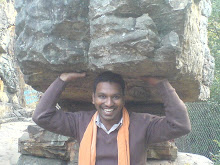
These extra-solar planets were seen to pass in front of, or transit, their host star. Studying such planets outside of our Solar System allows scientists to investigate how planetary systems form. WASP is the first team to detect planets in both the Northern and Southern Hemisphere using this technique.
Exoplanet expert Dr. Pierre Maxted comments “The planets are known as ‘hot-Jupiters’ as they are similar to Jupiter but are so close to their parent star that they orbit it in less than two days. This means that these planets have a surface temperature of nearly 2000°C and so are unlikely to host life. But finding these planets is important as these stars could also host much smaller planets similar to Earth, although detecting these worlds will be much more difficult”.
The planets orbit around stars similar to our Sun that are located at a distance of 850 light-years away from the Earth. Two are in the constellation of Phoenix visible only from the Southern hemisphere, while the third is in the Northern constellation of Lyra. All three stars are too faint to be seen with the naked eye, but are easily detectable with a small telescope.
Dr Coel Hellier, of Keele University, comments "When we see a transit we can deduce the size and mass of the planet and also what it is made of, so we can use these planets to study how solar systems form."
WASP-4 and WASP-5 are the first planets discovered by the WASP project's cameras in South Africa, and were confirmed by a collaboration with Swiss and French astronomers. "These two are now the brightest transiting planets in the Southern hemisphere" said Dr Hellier. WASP-3 is the third planet that the team has found in the North, using the SuperWASP camera sited in the Canary Islands.
Using data produced by SuperWASP’s cameras, which monitor up to 400,000 stars every minute, the new extra-solar planets were discovered as they were seen to pass in front of their host star.
Explaining the discovery, Dr Don Pollacco of Queen’s University, Belfast, Astrophysics Research Centre said: “We take pictures of the sky and measure the brightness of stars. If a planet is going around one of these stars and it happens to pass across the face of that star, our cameras will pick up the light from the star getting a little fainter.
“Discoveries such as these open up a whole new area of astronomy. Such transiting planets are important because they are the only ones that can have their mass and size measured directly. Astronomers can determine what they are made of and armed with this information we can begin to understand how these solar systems were formed.”
The WASP project is the most ambitious project in the world designed to discover large planets. Funding for the project comes from the UK Universities and the Science and Technology Facilities Council.


